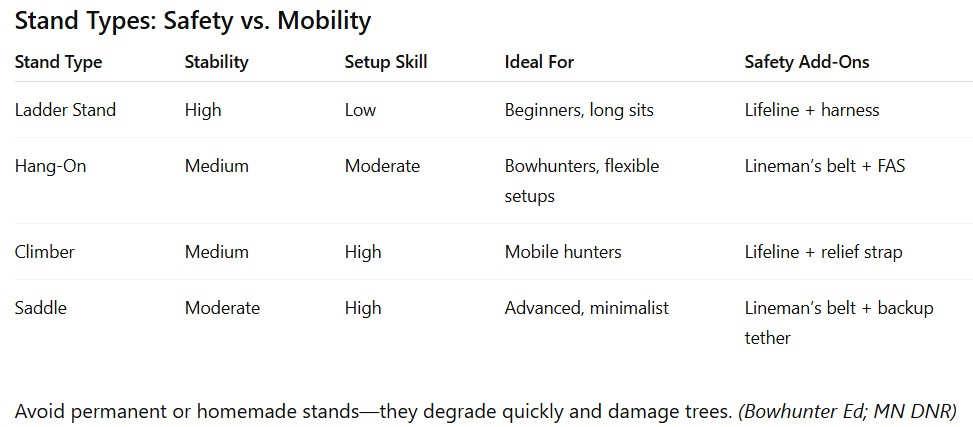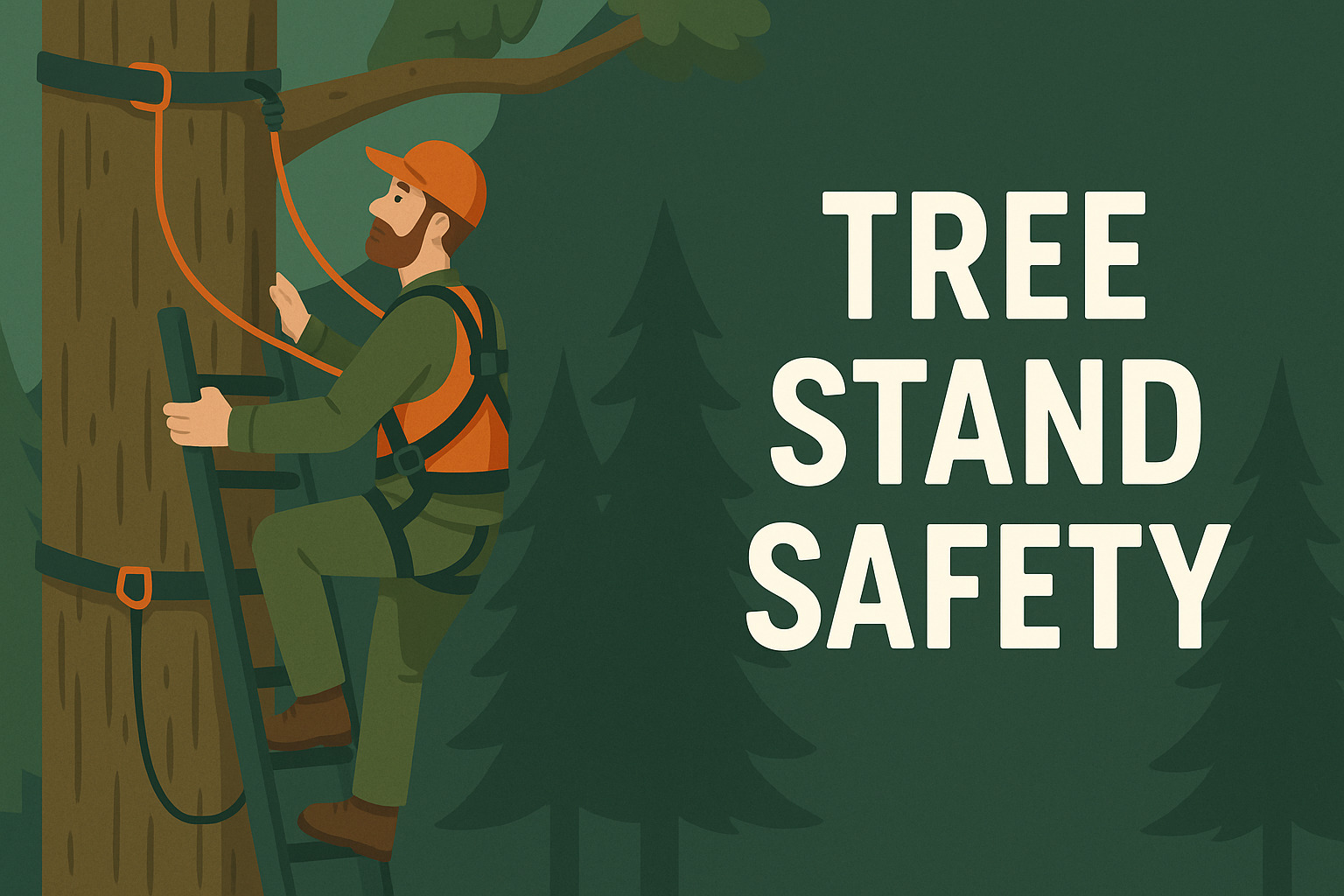Tree Stand Safety 101: How to Prevent Falls and Enjoy a Safe Season
Every fall, thousands of hunters are seriously injured from treestand falls—most during the climb up or down. In 2025, with more hunters returning to private-land access through programs like LandTrust, tree stand safety isn’t just smart; it’s essential for keeping every hunt enjoyable and incident-free.
Tree stand falls cause 3,000–6,000+ injuries annually, many completely preventable with a full-body harness (FAS) and lifeline system (Mayo Clinic; WI DNR).
Following a simple process—inspect, attach, climb, hunt, exit—keeps hunters secure while maintaining ethical, conservation-minded use of private lands.
When Falls Happen (and Why)
Most falls occur during ascent or descent, not while sitting in the stand. The most common culprits:
- Worn or outdated gear
- Skipping the harness “just for a quick sit”
- Losing three-point contact
- Slick boots or fatigue
- Homemade or permanent stands that degrade over time
Top 5 Risk Moments:
- Installing a stand
- Climbing before attaching the tether
- Transitioning from ladder to platform
- Shifting for a shot
- Exiting while fatigued or rushed
(Sources: Hunter Ed, MN DNR, Bowhunter Ed)
The Non-Negotiable: Full-Body Harness + Lifeline
Your Fall Arrest System (FAS) includes four critical parts:
- Full-body harness
- Tree strap
- Tether with shock absorber
- Suspension relief strap
The golden rule: Attach at ground level and stay connected until both feet are back on the ground.
A lifeline with a prusik knot ensures continuous connection while climbing. Skip chest or single-strap belts—they can cause severe injury in a fall.
“A full-body harness and lifeline turn 20 feet of risk into 20 feet of security.” — Hunter Ed, WI DNR
Pre-Season & Pre-Climb Checklist
Before every climb, check:
- Inspect: Rust, frayed straps, loose bolts—replace worn gear annually. (VA DWR)
- Tree health: Choose live, rough-barked trees; avoid ash or softwoods showing decay. (VT F&W)
- Fit & rehearse: Adjust your harness and test suspension relief at ground level. (Hunter Ed)
- Pack right: Haul line, gloves, red headlamp, whistle, phone in chest pocket.
- Avoid risks: No alcohol or sedating meds before hunting. (Mayo Clinic)
Snippet Box: “Pre-Climb Safety Checklist”
- Inspect stand and gear
- Secure harness at ground level
- Attach lifeline before climbing
- Maintain three-point contact
- Haul gear with line, not hands
Climb & In-Stand Best Practices
Maintain three-point contact (two hands and one foot, or vice versa) at all times. (WI DNR)
Use a haul line for firearms or bows—never climb while holding them. (GA DNR)
Attach your tether at or just above head height when seated, minimizing slack to reduce fall distance. If a fall occurs, immediately use your suspension relief strap to avoid trauma. (Hunter Ed)
“In-Stand Rules”
- Stay clipped in from ground to ground
- Keep tether short and taut
- Use relief strap immediately after a fall
- Never overreach for a shot

Shot-Angle Safety from a Tree Stand
Proper angle discipline saves both shots and lives.
- Bend at the waist, not the spine
- Avoid straight-down shots—aim for an exit path through vitals
- Practice elevated shots pre-season
- Use angle-compensating rangefinders for ethical accuracy
Keep tethers short to prevent losing balance while drawing or aiming.
Exit Strategy Without Spooking Deer
Leaving safely matters as much as arriving.
- Plan your route in advance, accounting for wind and light
- Use red light or moonlight to minimize detection
- Move deliberately; if deer linger, wait them out or use vehicle noise as distraction
- Descend with three-point contact and attached harness
(Bowhunter Ed)
FAQs: Tree Stand Safety Essentials
What is the biggest hazard of tree stands?
Falls during climbing and transition phases. (Hunter Ed)
When should a hunter wear a full-body harness?
Whenever feet leave the ground. (WI & MN DNR)
What stands are unsafe?
Permanent or homemade stands. (Bowhunter Ed)
What’s the safest type?
Ladder stands—though safety depends on consistent harness use. (Mossy Oak)
How many people fall each year?
An estimated 3,000–6,000+, often underreported. (Mayo Clinic)
Conclusion: Hunt Safe, Hunt Smart
Tree stand safety is simple: Inspect. Attach. Climb. Hunt. Exit.
Every safe hunt protects not just you—but the future of ethical, private-land hunting.
Explore safety-forward private land opportunities on LandTrust+.
Check each property’s Field Notes and local regulations to stay compliant and confident.
“Safe climbs make ethical hunts possible. Every connection—between harness, hunter, and habitat—matters.”

